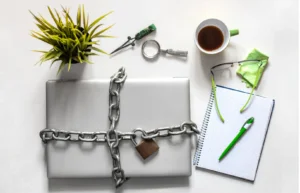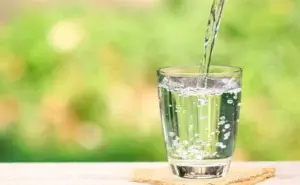
The Hidden Power of Fasting Intermittent: Unlock Natural Healing
Fasting intermittently is a popular way to improve health and wellness. It involves alternating between eating and fasting periods, allowing flexibility for those who want

Lymphatic drainage is a complex network that often goes unnoticed. However, it plays a crucial role in maintaining our health and well-being. This hidden hero is none other than the lymphatic system! It is a vital component of our body’s immune and circulatory systems.
The circulatory system pumps blood and the lymphatic system carries out a range of essential functions. One of the most intriguing is lymphatic drainage.
Whether you’re seeking to revitalize your body’s natural detoxification process, recover from a surgical procedure, or enhance your well-being. Understanding lymphatic drainage can be a valuable tool in your wellness toolkit.

The lymphatic system is a complex network of vessels, nodes, and organs that work together. It transports lymph. Lymph is a clear fluid containing white blood cells, proteins, and waste products. It has several key functions, including maintaining fluid balance, supporting the immune system, and aiding in the transport of nutrients and waste products.
The lymphatic system serves several crucial functions:
The lymphatic system helps maintain the body’s fluid balance. It collects excess interstitial fluid from the tissues. Thereafter, returns it to the bloodstream. This prevents the accumulation of fluid in the tissues, which could lead to swelling (edema).
Lymph nodes are small, bean-shaped structures. Found throughout the body, they play a central role in the immune system. They filter lymph and trap bacteria, viruses, and foreign particles. Within the lymph nodes, immune cells (lymphocytes) help identify and neutralize these harmful substances.
Lymphatic vessels transport fats, fat-soluble vitamins, and other nutrients. They transport them from the digestive system to the bloodstream. Additionally, the lymphatic system helps remove waste products and cellular debris.
The lymphatic system supports the body’s immune response. This is by providing a pathway for immune cells to travel to areas of infection or injury. Immune cells in lymph nodes and other lymphatic tissues can become activated to fight off infections.
Unfortunately, the lymphatic system can also facilitate the spread of cancer cells. Tumor cells can enter lymphatic vessels and travel to nearby lymph nodes or distant parts of the body. The traveling cells contribute to the metastasis of cancer.
The key components of the lymphatic system include lymphatic vessels (which are similar in structure to blood vessels), lymph nodes, the spleen, the thymus, and the tonsils. The system works in coordination with the cardiovascular system (blood circulatory system) to maintain the body’s overall health and protect it from infections and diseases.
The lymphatic system doesn’t have a central pump like the heart in the circulatory system. Instead, the movement of lymph is primarily driven by the contraction of muscles, the pressure changes that occur during breathing, and the pulsation of nearby arteries.
Lymphatic vessels are thin tubes that closely parallel blood vessels throughout the body. These vessels form an intricate network that collects excess fluid, nutrients, and waste products from the body’s tissues. This fluid is known as interstitial fluid.
As interstitial fluid accumulates in the tissues, it is collected by the lymphatic vessels, becoming lymph. Lymph contains white blood cells (lymphocytes) that are crucial for immune defense.
Lymphatic vessels have one-way valves that prevent the backflow of lymph. The rhythmic contractions of nearby muscles, changes in pressure due to breathing, and pulsations of nearby arteries help propel lymph through the vessels. The movement of lymph is relatively slow compared to the circulation of blood in arteries and veins. Therefore, a fluid buildup can occur.
Lymph nodes are small, bean-shaped structures found along the lymphatic vessels. Lymph nodes act as filtering stations for the lymph, where immune cells interact with and neutralize pathogens, toxins, and foreign particles carried by the lymph.
Lymphatic massage or manual lymphatic drainage, is a therapeutic deep tissue massage technique designed to encourage the natural flow of lymphatic fluid. This technique involves gentle, rhythmic movements and pressure applied to specific areas of the body in order to stimulate the movement of lymphatic fluid and promote drainage.
Lymphatic drainage is often used for various purposes, including:
Lymphatic drainage is commonly used to help reduce swelling, particularly after surgeries or injuries. By enhancing the flow of lymph fluid, excess fluid can be directed away from tissues, thereby alleviating swelling and promoting healing.
Lymphatic drainage aids in the removal of toxins and waste products from the body. By improving lymphatic circulation, proponents suggest that the body’s natural detoxification processes can be enhanced.
Improved lymphatic flow can help enhance the immune system’s function by promoting the movement of immune cells and antibodies throughout the body, aiding in the detection and elimination of pathogens.
The gentle, rhythmic techniques used in lymphatic drainage can promote relaxation and reduce stress. The massage is usually quite gentle and soothing.
Lymphatic drainage is commonly used after certain surgical procedures, such as cosmetic surgeries, to help reduce post-operative swelling and promote healing.
Lymphatic drainage can help improve overall circulation by aiding in the movement of lymphatic fluid and promoting better blood flow. Manual lymphatic drainage massage techniques increase blood flow and therefore, reduce blood clots.
Lymphatic drainage is typically performed by a trained massage therapist or practitioner who has a deep understanding of the lymphatic system’s anatomy and function. A lymph drainage connective tissue massage involves specific hand movements and sequences that are designed to follow the natural pathways of the lymphatic vessels. The pressure applied during the massage is very light and rhythmic, as excessive pressure could potentially damage the delicate lymphatic vessels.
Lymphatic drainage is essential for maintaining a healthy immune system, managing fluid balance, and eliminating waste from the body. Here are some additional ways to increase lymphatic drainage:
Staying well-hydrated helps maintain optimal lymphatic flow. Drink plenty of water throughout the day to support the movement of lymph fluid.
Practicing deep breathing exercises can stimulate lymphatic flow by creating pressure changes in the thoracic and abdominal cavities. Diaphragmatic breathing and exercises like yoga or qigong can be beneficial.
Regular physical activity encourages lymphatic circulation. Activities like brisk walking, swimming, rebounding (using a mini-trampoline), and yoga can help pump lymph through the vessels.
Manual lymphatic drainage (MLD) massage is specifically designed to stimulate lymphatic flow. This gentle massage technique helps move lymph fluid from congested areas to functional lymph nodes.
Using a soft, natural bristle brush, gently brush your skin in the direction of lymph flow. This practice can help stimulate lymphatic vessels located just below the skin’s surface.
Compression garments, like lymphedema sleeves or stockings, can help create external pressure that assists lymphatic flow. These are often used in cases of lymphedema or after surgery.
Alternating between hot and cold water during a shower or bath can stimulate lymphatic circulation. Start with warm water for a few minutes, then switch to cool water for about 30 seconds. Repeat the cycle a few times, always ending with cold water.
Consuming a diet rich in fruits, vegetables, and whole foods can provide the body with essential nutrients and antioxidants that support lymphatic health. Avoid excessive salt and processed foods, as they can contribute to fluid retention.
Certain herbs, like cleavers, calendula, and red clover, are believed to support lymphatic function. Consult with a healthcare professional before using herbs for medicinal purposes.
Elevating your legs above your heart level for a few minutes several times a day can help lymphatic fluid drain from the lower extremities.
Wearing tight clothing, especially around areas with concentrated lymph nodes (e.g., groin and armpits), can impede lymphatic flow. Opt for loose-fitting clothing when possible.
Chronic stress can affect lymphatic function. Engage in relaxation techniques like meditation, deep breathing, or mindfulness to reduce stress and promote lymphatic flow.
Remember that consistency is key when trying to improve lymphatic drainage. If you have a medical condition or concerns about your lymphatic system, it’s important to consult with a healthcare professional before trying new approaches.
The Well of Life’s LymphFlo with Fulvic Minerals Supplement is the perfect mix of herbs to support lymphatic drainage. Lymph Flo uses herbs like pau d’arco powder, cleaver herb powder, red peony root, and others to cleanse your lymphatic system.

This is one of the most common and noticeable consequences of poor lymphatic drainage. Lymphedema is the swelling of a body part, usually an arm or leg, due to the accumulation of lymphatic fluid. It can be caused by a variety of factors, including surgery, radiation therapy, infection, trauma, or congenital conditions. Lymphedema can be painful, limit mobility, and increase the risk of infections.
The lymphatic system helps transport immune cells to various parts of the body to fight infections. When lymphatic drainage is compromised, the body’s ability to effectively combat infections is reduced. This can lead to a higher susceptibility to bacterial, viral, and fungal infections.
Since the lymphatic system plays a crucial role in maintaining fluid balance, poor drainage can lead to fluid retention and swelling in affected body parts. This can cause discomfort, heaviness, and restricted movement.
Cellulitis is a bacterial skin infection that can occur when bacteria enter through a break in the skin. When lymphatic drainage is impaired, the body’s ability to clear bacteria and toxins is compromised, increasing the risk of developing cellulitis.
Proper lymphatic circulation is important for transporting nutrients and oxygen to tissues and removing waste products. Poor lymphatic drainage can slow down the healing process, especially after injuries, surgeries, or wounds.
Inflammation is a normal response to injury or infection. However, when lymphatic drainage is impaired, chronic inflammation can develop. Prolonged inflammation is associated with tissue damage and the progression of various diseases.
Over time, chronic fluid accumulation and inflammation can lead to fibrosis, a condition where excess connective tissue builds up in the affected area. This can result in tissue hardening and further restrict movement.
The lymphatic system is involved in transporting nutrients from the digestive system to the cells that need them. Poor lymphatic drainage can disrupt this process, leading to reduced nutrient delivery to tissues.
Skin in the affected area may become dry, thickened, and prone to infections due to the accumulation of lymphatic fluid and reduced immune function.
The lymphatic system is an integral part of the immune system, aiding in the detection and removal of foreign substances, such as pathogens and toxins. When lymphatic drainage is compromised, the immune response can be impaired, making the body more vulnerable to diseases.
CVI is a medical condition that occurs when the veins in the legs, and sometimes other parts of the body, are unable to efficiently return blood to the heart. This condition typically develops when the valves in the veins, which help prevent the backflow of blood, become damaged or weakened, leading to poor blood circulation. As a result, blood can pool in the veins, causing a range of symptoms and potential complications.
It’s important to note that the consequences of poor lymphatic drainage can vary based on the underlying cause and the severity of the condition. If you suspect you have poor lymphatic drainage or are experiencing any of these symptoms, it’s advisable to consult a medical professional for proper diagnosis and management.
Prioritizing your lymphatic system’s health through lymphatic drainage can have a significant impact on your overall well-being.
This frequently ignored system is critical in maintaining a healthy immune system, efficient waste elimination, and fluid balance within the body. You enable your body to work properly by adopting practices such as manual lymphatic drainage, exercise, appropriate hydration, and a balanced diet or supplementation.

Fasting intermittently is a popular way to improve health and wellness. It involves alternating between eating and fasting periods, allowing flexibility for those who want

Gluten-free lifestyles might seem intimidating, particularly if you’re just getting started. All sorts of tasty and healthy options that you may not have thought of

Basic Health for Men: A Gentle Guide for a Better Lifestyle Health for men is a topic that is often overlooked because there are more

The Power of A Digital Detox: Revitalizing Your Life A digital detox is needed now more than ever, as digital devices are our most valuable

The Role of Chlorine Dioxide in Holistic Healing: Alternative Therapies Chlorine dioxide (CDS), also known as the miracle solution, has been underestimated for many years.

A vertigo dizziness remedy can be difficult to find as vertigo can be an unsettling experience. This often leads to a spinning sensation and feeling


This website or its third-party tools use cookies, which are necessary for its functioning and required to achieve the purposes illustrated in the cookie policy. You accept the use of cookies by closing or dismissing this notice, by clicking a link or button or by continuing to browse otherwise.
3 thoughts on “Lymphatic Drainage: Improve Your Lymphatic System”
Excellent written explanation of the lymphatic system and what one can do to improve lymphatic drainage.
Thank you,
Lorna
The info is well appreciated.
God bless you
Good presentation in clear language.
I appreciate the lucidly presented subject matter.